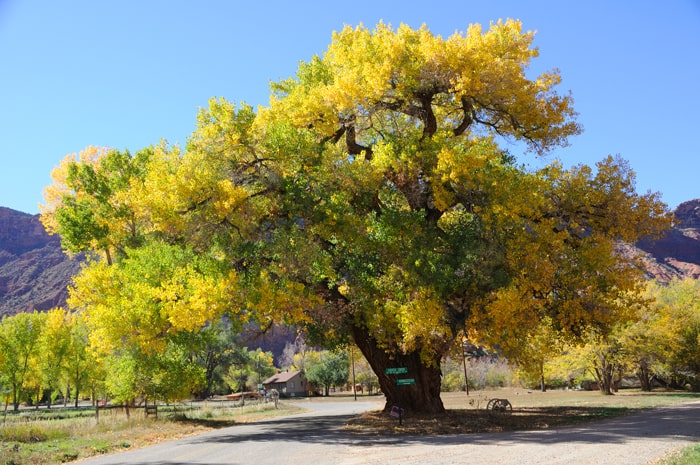You will be familiar with cottonwood trees if you reside in the US. Some of them go as high as 100 feet.
Cottonwood grow in different parts of the country, from tropical climates to arid regions with low rainfall levels and cold winters. They prefer fertile soil with plenty of sunlight and water – so they can grow lush and big. However, they are one of the most dangerous tree species in the Midwest.
Cottonwood can grow up to 50 feet tall and have a widespread effect. This means they may cause damage to your property if they fall onto it or land on top of an object like a car or garage door.
To avoid this, you can hire a reputable tree removal service company to remove it from your property or do it yourself.
Removing cottonwood is a stepwise process that requires proper attention to details. This is why this guide will help you learn about the necessary tools and steps to go about it.
Six Steps to Remove Large Cottonwood Trees
Step 1: Check for Tree Removal Laws
Many countries around the world have guidelines for tree removal. While felling still occurs in Brazil, Congo, and Indonesia, countries like Norway have strict laws prohibiting it.
Even in the US, several states have different laws concerning the issue. For instance, the laws in Florida and Georgia require property owners to get permission before cutting trees more than six inches. Meanwhile, states like Alabama, Arizona, and Delaware, do not have restrictions on tree removal, as long as it’s on private property. You can click on https://www.treeremoval.com/ to read more about tree felling law in the US.
Before removing trees from your property, ensure you are familiar with deforestation and tree-felling laws. This way, you’ll know whether to get a permit first or to go ahead and bring it all down.
Step 2: Get the Necessary Tools
Using the right tools can save you time and stress. For large cottonwood trees, several tools and equipment are vital for cutting. They include:
- Chain saw
- Hatchet
- Ax
- Pole saw
- Climbing equipment (like a ladder)
- Handsaw
- Wood chipper, and more.
- Protective clothes
While you might not need all of these tools, some of them are vital. For instance, you’ll need a chain saw, an ax, and a ladder to cut down the tree to a low level. But if you need to remove the entire tree from its root, you’ll need other equipment.
Step 3: Trim Away any Limbs or Branches at the Tree Top
A piece of climbing equipment will come in handy here. You can use a ladder to reach the top of the cottonwood tree.
A good rule of thumb is to select ladders strong enough to support your weight and stable enough not to tip over when you step on them. This will help prevent accidents.
Once you can climb, trim away any limbs or branches at the top of the cottonwood tree that’s standing above your home or nearby vehicles. You can do this by cutting them with a saw or using an ax. If you have a chainsaw, use it. You can watch this video to learn more about using a chainsaw.
If you aren’t comfortable doing this yourself, consider hiring someone trained in removing large trees from homes and yards (such as a landscaping company).
Step 4: Cut Through the Remaining Limbs and Branches Using a Handsaw
Use a handsaw to cut through the remaining limbs and branches – so they fall far from your home and nearby vehicles.
Handsaws are safer than an ax or chain saw because you can protect yourself from falling debris with your body if necessary. However, ensure you wear protective clothing (e.g., gloves) to protect yourself from cuts, splinters, and other debris that may fly off the tree during this process.
Step 5: Cut the Tree
After clearing the branches, it’s time to cut the tree.
Choose an angle that has no property to avoid damage. If your neighbor’s house or property is close, ensure you discuss it with them before proceeding. Also, having insurance can help in case of any damage. But if you don’t have one, you should hire a professional service that does instead.
While cutting, observe tree cutting safety tips like maintaining a safe distance and watching for electric power lines. Also, cut away from your direction to avoid the tree falling on you.
Step 6: Clear the Area and Wrap up
Now that you’ve gotten rid of the cottonwood, it’s time to take care of any debris left behind. You’ll want to clear away any loose branches and limbs that fell during this process as well. If there is a large amount of wood lying around on the ground, dispose of it by burning or using them for your fireplace.
Conclusion
Cottonwood trees are common throughout the United States. The average cottonwood tree grows to be 80 feet tall, but some may grow to 100 feet or more.
The root systems of cottonwoods are very shallow and easily damaged by digging or hauling operations. If you accidentally damage a stump, it is best to remove it as soon as possible so that further damage does not occur.
